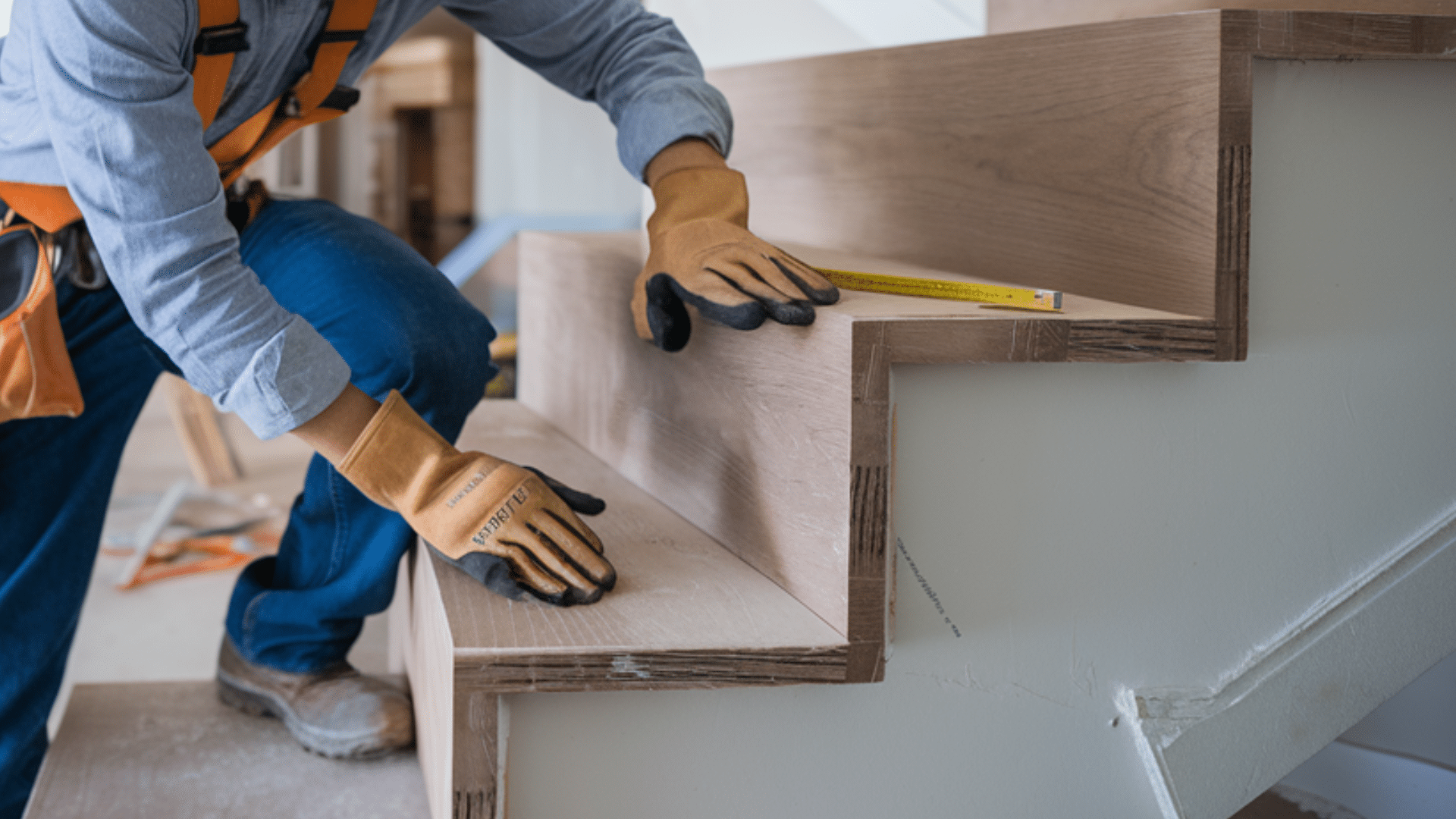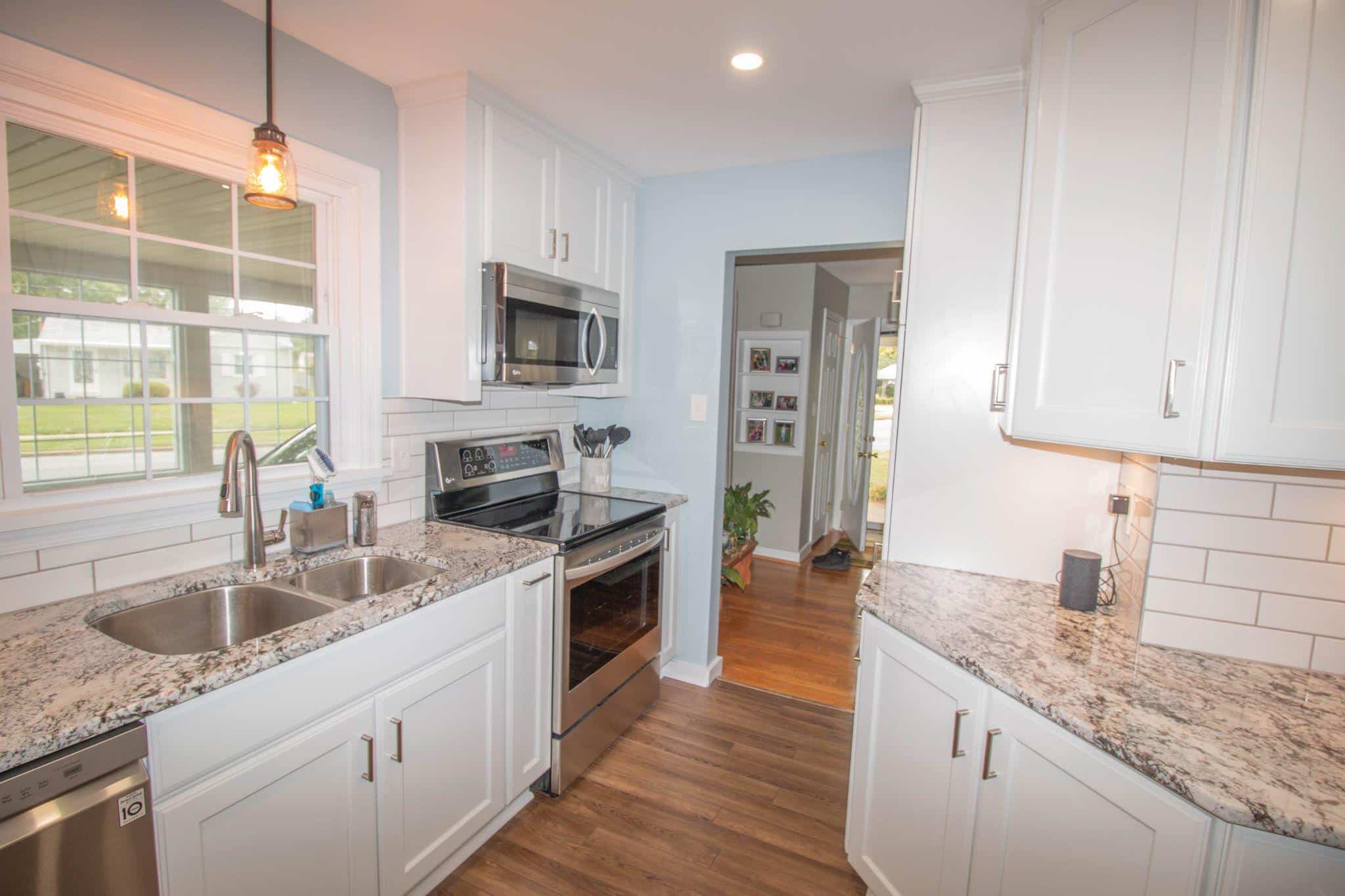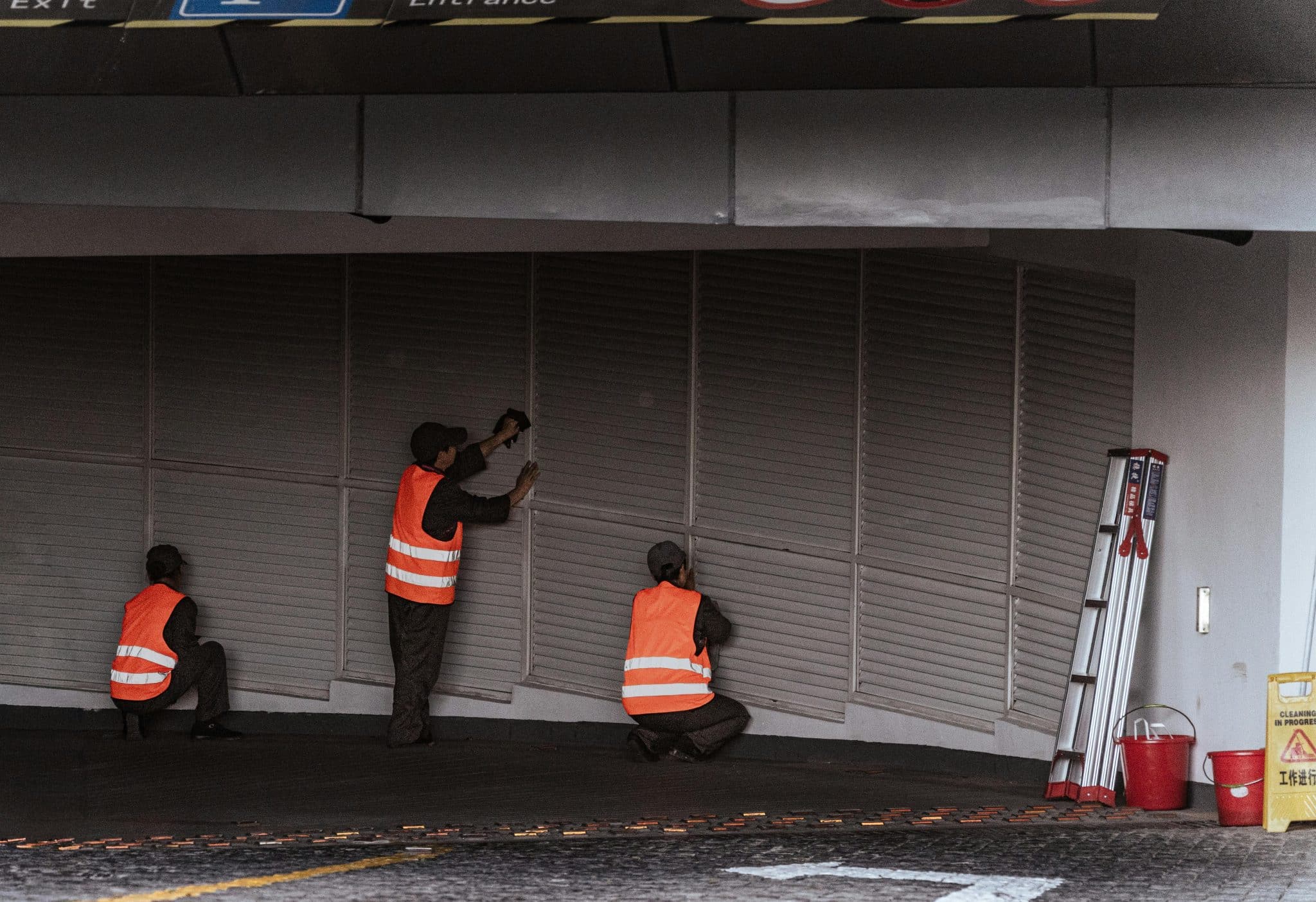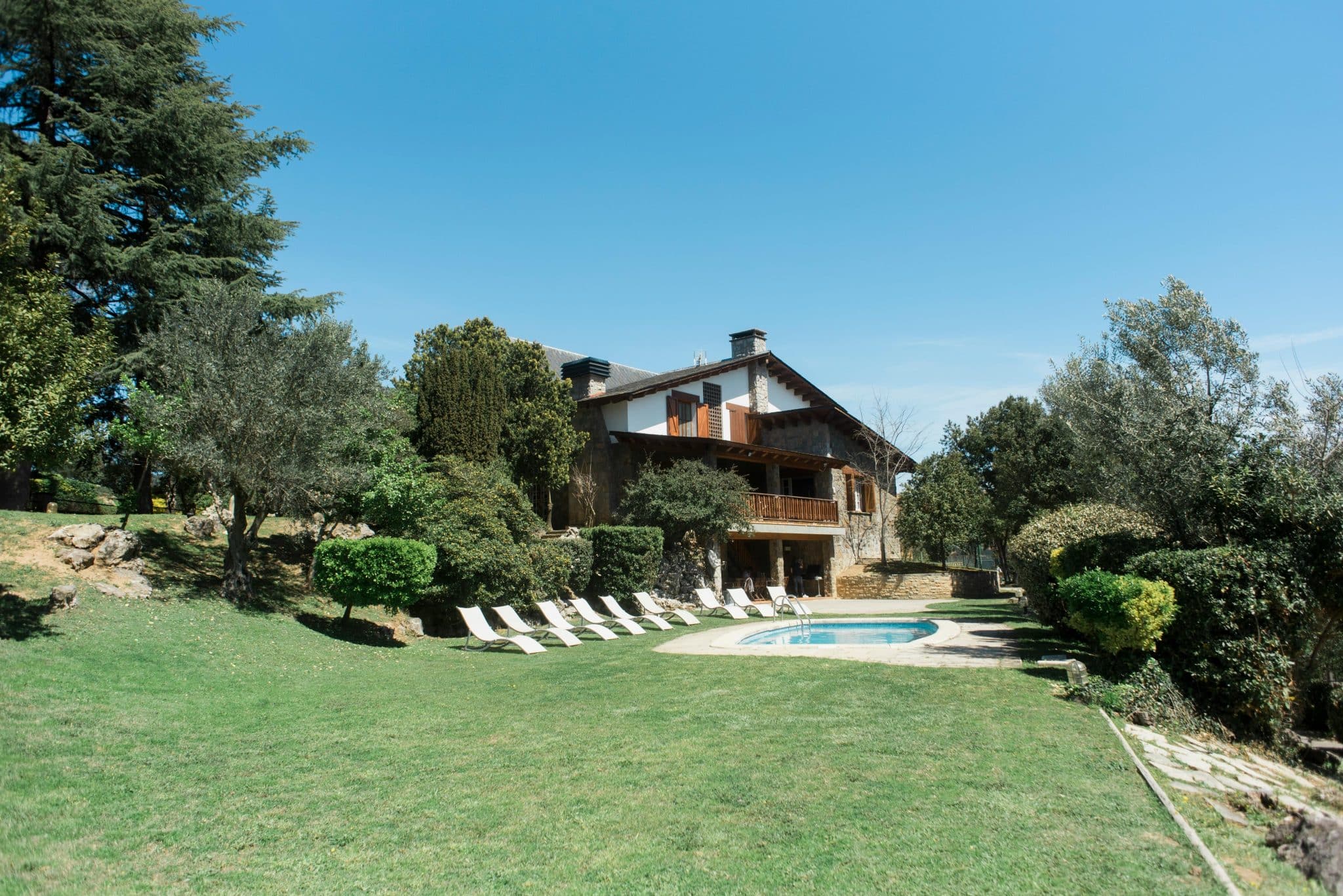Does your home have stairs that meet all safety requirements?
Building a safe staircase involves more than following your instincts – it requires careful attention to specific measurements and guidelines.
Proper stair dimensions play a vital role in preventing accidents and making your home safe for everyone.
Each measurement, from the width of your stairs to the height between steps, must follow specific building codes and standards.
In this guide, we’ll walk you through the essential measurements for residential stairs.
You’ll learn about the International Residential Code (IRC) requirements, understand key measurements, and know how to check if your stairs meet safety standards.
We’ll also share tips to help you avoid common mistakes during construction or renovation.
Understanding Stair Codes
Building a safe staircase requires following specific rules set by the International Residential Code (IRC) for homes and the International Building Code (IBC) for larger buildings.
For your home, focus on the IRC – it’s your primary guide for stair safety standards.
However, local building departments often add their own rules. Before you build or change any stairs, check with them to:
- Get the right permits
- Learn about local requirements
- Schedule needed inspections
Remember: Building inspectors measure everything carefully.
Getting these measurements wrong means redoing the work, costing extra time and money.
Key Stair Measurements To Know
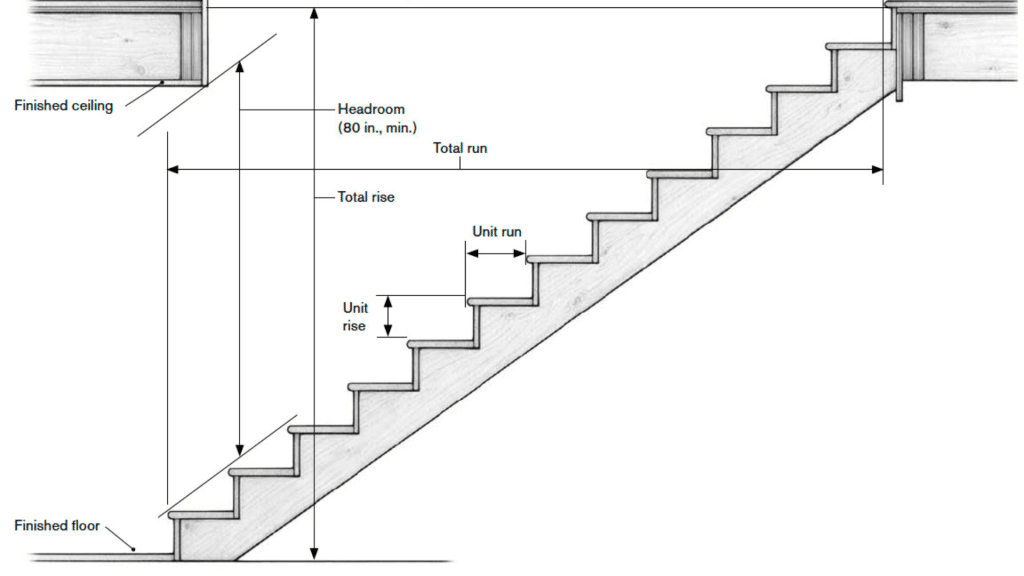
Getting your stair measurements right keeps everyone safe. Here are the essential measurements you must follow:
Quick Note:
| Stair Component | Standard Size |
|---|---|
| Staircase Width | 36 inches minimum |
| Riser Height | 7-3/4 inches maximum |
| Tread Depth | 10-11 inches |
| Headroom Clearance | 6 feet 8 inches minimum |
1. Staircase Width
The minimum width requirement is 36 inches for residential stairs.
This measurement ensures people can move safely up and down, carry items, and use the stairs comfortably.
Think about fitting furniture through your stairway too – the minimum width helps with that.
2. Riser Height
Your stairs’ rise (the vertical height between steps) can’t exceed 7-3/4 inches.
Each riser must be the same height – even small differences can cause trips and falls.
When people climb stairs, they develop a rhythm, and consistent risers help maintain this safe pattern.
3. Tread Depth
The flat part of the step where you place your foot needs a minimum depth of 10-11 inches.
This gives enough space for your whole foot to rest safely on each step.
Proper tread depth prevents slips and makes climbing stairs more comfortable.
4. Headroom Clearance
You need at least 6 feet 8 inches of vertical space above the stairs.
This measurement starts from the edge of each step and goes straight up.
Good headroom prevents head injuries and makes carrying items upstairs safer.
Remember: These measurements work together to create safe, functional stairs.
Additional Staircase Features
Your stairs need more than just basic measurements to be safe.
Here are three key features that require careful attention:
Landing Requirements
When your stairs change direction or run for long distances, you need landings. Think of these as rest stops on your staircase. A landing must be:
- As wide as your staircase
- At least 36 inches in the direction of travel
- Level and stable
- Present at the top and bottom of the stairs
Staircase Nosing
The front edge of your stair needs a slight overhang, called nosing. This helps you:
- See each step clearly
- Place your foot securely
- Maintain balance while climbing
The nosing should stick out between 3/4 inch and 1-1/4 inches. Too much or too little can create tripping hazards.
Proper Lighting
Good lighting prevents accidents. Your stairs need:
- Light switches at both top and bottom
- Enough brightness to see each step clearly
- No shadows that might hide step edges
- Light fixtures that won’t create glare
Common Issues And How To Avoid Them
Let’s look at frequent stair-building mistakes and ways to prevent them. These tips can save you from costly fixes later.
1. Uneven Riser Heights
- Common Problem: Steps with different heights cause trips and falls
- Prevention: Measure each riser carefully during construction
- Fix: Use a level and straight edge to check every step
- Tip: Mark your measurements clearly before cutting
2. Wrong Tread Depth
- Common Problem: Steps too shallow for feet to rest safely
- Prevention: Cut all treads to exact measurements
- Fix: Double-check depths against code requirements
- Tip: Build a test step first to confirm measurements
3. Incorrect Landing Size
- Common Problem: Landings too small for safe turns
- Prevention: Plan landing space before building
- Fix: Ensure landings match stair width
- Tip: Mark landing outline on floor before construction
4. Poor Lighting Setup
- Common Problem: Dark spots create fall risks
- Prevention: Plan light placement early
- Fix: Install switches at both ends
- Tip: Test lighting at different times of day
By watching for these issues during planning and building, you’ll create safer stairs that pass inspection the first time.
Conclusion
Building safe stairs means getting every measurement right.
The time you spend checking dimensions and following building codes protects your family and visitors from accidents.
Good stairs come from attention to detail and careful planning.
Each measurement, from the height of steps to the depth of treads, plays a vital role in stair safety.
Working with your local building department helps you understand all requirements that might go beyond basic codes.
Getting measurements right the first time saves you from expensive corrections later.
Most importantly, well-built stairs following proper guidelines make your home safer for everyone who uses them.
Regular maintenance and checks help keep your stairs in good condition year after year.
Frequently Asked Questions
What Is the Size of A Comfortable Staircase?
For comfortable daily use, a staircase should be 36 inches wide, with 7-inch riser heights and 11-inch tread depths.
This ensures safe foot placement and facilitates effortless movement.
What Is the Golden Rule For Stairs?
The generally accepted standard for stairs states that the sum of twice the riser height and the tread depth should be between 24 and 25 inches (60.96-63.5cm).
What Is the Ideal Rise And Run Of Stairs?
The ideal rise (vertical height) for stairs is between 6.5 to 7.75 inches, while the ideal run (horizontal depth) should be 10 to 11 inches.
A rise-to-run ratio of 7/11 inches is considered optimal for comfort and safety in most residential applications.

